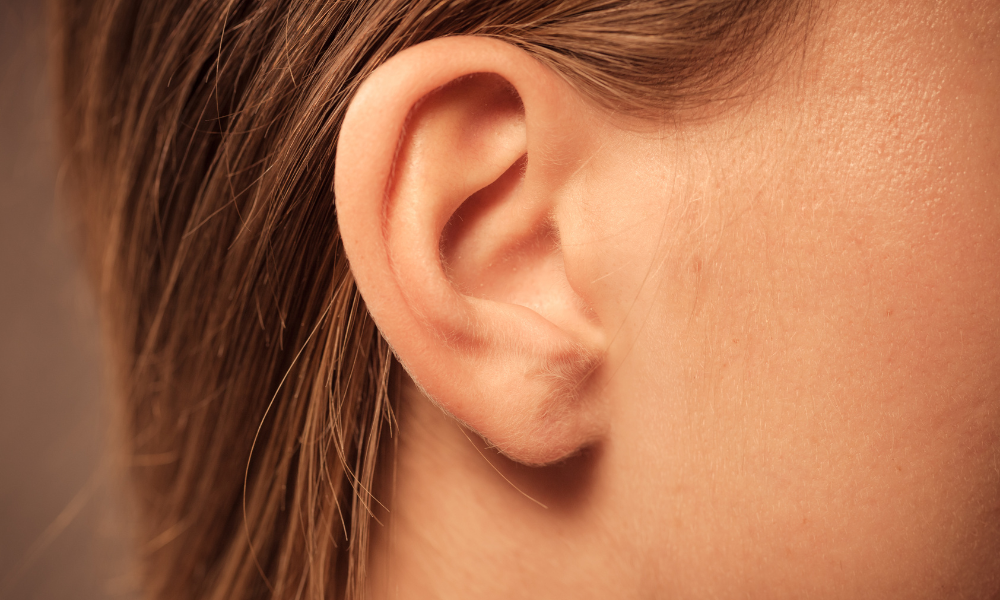Deafness as a Physic: A Personal Experience
By Sarah “Kinje” Brooks, DPT

I have been deaf from birth. It rarely stops me from doing anything, but it does touch everything in my life. As with any disability, the degree to which it alters one’s experience and behavior can vary widely from person to person.
Like a silver lining, I have found clinical benefits to deafness. There is a dubious trope about losing one sense and gaining heightened sensitivity in another; in my case, it seems somewhat true. My heightened awareness is a necessary coping function, which focuses my attention on non-verbal cues and body language, communicating through my hands and fingers, and increased empathy with clients who also are differently abled or suffering with chronic conditions.
The biggest challenges I faced as a student and now manage as a clinician have been directly related to my lack of working ears. Any telephone use, such as scheduling and physician/practitioner communications, becomes critical and requires a superb office person or assistant. In hospitals and other public venues, I have to be watching the behavior of those around me in order to know of overhead announcements or alarms. Only then do I know to ask nearby “hearies” to fill me in.
I can’t learn about a supervisor’s or coworkers’ situation by casually listening to office discussion, so some relational assumptions that smooth social interactions can fall through when all of my communication, both expressive and receptive, requires intent and facilitation.
Environmental factors play a large role in my clinical efficiency and are often the difference between a rewarding day (where my clients experience real change) and a difficult day (where I tell myself “my patients deserve better from me.”) I depend entirely on visual and tactile input (including sound vibration) for information gathering. Things like inadequate light or overly harsh shadows, clinic acoustics that favor reverberation and obscure other sensation, visual “busy-ness” cluttering input, obstructed view of patients or assistants, use of audible alarms without visual components, lack of digital blood pressure cuffs–all of these are significant barriers that I must work around. The more barriers, the more my performance drops, as I expend my time and energy finding solutions or hearing helpers.
When learning and training, it takes two to three times as long as my hearing counterparts. I must pre-learn the vocabulary I’m going to need to lipread, decipher as many words as possible during lecture or discussion, follow conversation as best I can as the moving lips bounce from person to person, then re-read notes and text with context to fill in any blanks. This also is what is required for patient prep/post.
Adding language or speech issues exacerbates the difficulties, often requiring gestures and drawings to communicate. Thus, I always keep a whiteboard handy.
I’ve learned that I can minimize limitations and maximize my strengths by designing my space and interaction techniques. Choosing to go into pelvic practice is the primary example of this, because the specialty is particularly conducive to one-on-one patient care that maximizes my communication skills and minimizes any sensory clutter.
Bright and diffused lighting placed near face-level rather than ceiling level limits obscuring shadows and ensures enough light to “hear” visually. Strategically placed mirrors allow me to read facial expressions and lips from behind patients; controlling both patient positioning and environment often makes a patient forget I cannot hear them. When a patient requires prone positioning, I cue for hand signals rather than inaudible (to me) verbal responses. And because it alters setting and communication, I always disclose my deafness to clients.
Some things are critical for keeping me an alert clinician, especially my overall health and rest, which dictate my ability to maintain the intensity and focus I require to communicate, figure out context, read, and respond to my patients’ needs.
The same also effects my expressive communication, since I do lapse into a deaf-speech pattern with fatigue or illness, which can limit my clients’ ability to understand me.
I am blessed to have a history of extensive vocal training, so I can usually “pass” or be “high-functioning.” The amount of training, time, preparation, and energy that goes into passing is not unique to me. Each of our clients, especially those with disabilities and chronic illnesses, face barriers unique to their limitations, and it serves us well as clinicians to be mindful of this so we lessen burdens rather than adding to them.
AUTHOR: Sarah “Kinje” Brooks, DPT, is a physical therapist at Wellness Physical Therapy in Fort Smith, Arkansas, and surrounding area. She can be reached at neurogenesis.purkinje@gmail.com.


